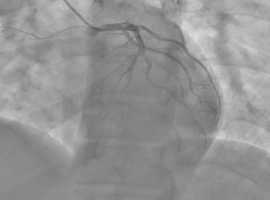Alexis DeTienne1, Brooke Scieszinski2, Jared Olson2, Paige Spencer2 and Bradford Cardonell2*
1School of Medicine, University of Missouri, Columbia, MO, USA
2Department of Anesthesiology, University of Missouri Hospital, Columbia, MO, USA
*Corresponding author: Brad Cardonell, Department of Anesthesiology, University of Missouri Hospital, Columbia, MO, USA.
E-mail: cardonellb@health.missouri.edu
Received: August 06, 2025; Accepted: August 19, 2025; Published: September 05, 2025
Citation: DeTienne A, Scieszinski B, Cardonell B, et al. Spontaneous Coronary Artery Dissection: Review of Current Management Strategies. Case Rep Clin Cardiol J. 2025; 5(4): 161.

